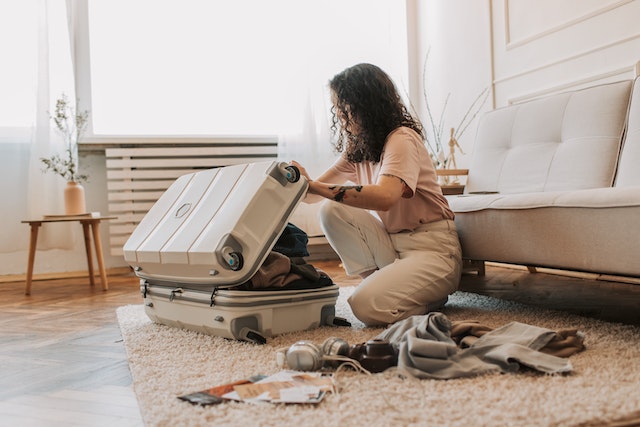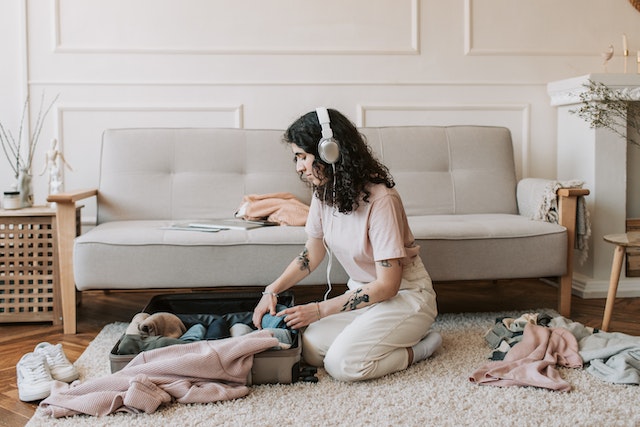
What’s On My Backpacking Europe Packing List
You’re ready to hit the road! You’ve planned your itinerary, saved up for a ticket, and booked a hostel. Now you need to pack. But where do you start? What should go in that backpack? And how can you make sure it fits into the overhead bin on the plane? We’ll cover all of this and more in this guide so that when you set foot in Europe—or wherever your next adventure takes place—you’ll have all the essentials.
Your backpacking Europe packing list should only contain what you need! There will be plenty of time to buy the necessary items there. You are trying to save money after all and spend it on taking part in a European travel adventure. So here’s our guide to the backpacking Europe packing list you should use.
Quick Tips for Packing Light
- Pack Light
Lighten your load by keeping it to the essentials: pack what you need, and leave behind what you don’t. You can always pick up items as you go, but bringing too much will make it difficult to travel by train or plane. It also means that if you end up not using an item, it will be harder to let go of it later when space in your backpack and luggage may be limited.
- Pack Smartly
Make sure everything in your bag matches and fits together well so nothing falls out when moving around the town or hitting the trails. If something doesn’t fit back into its designated place after use, either get rid of it or find a way to make it fit better!
Travel Clothing
If you have decided to backpack through Europe, you must pack light. That is because European hostels are notoriously small and often have a strict weight limit for luggage. Your bag will also be weighed when you check in at the airport, so you mustn’t weigh too much.
You should also consider how much money you want to spend on clothes and what kind of clothes are appropriate for where you are going. For example, if your trip includes a lot of hiking or other outdoor activities like swimming or surfing, jeans won’t be very practical since they don’t breathe well and take forever to dry after getting wet. On the other hand, if your trip consists mainly of sightseeing in cities, wearing jeans may not be best as they tend not to look good with sneakers or sandals outside museums and cathedrals!
Travel Accessories and Travel Backpacks
Travel Wallet
You’ll want to pack a travel wallet to keep your passport, money and credit cards safe. There are many options, but this one is particularly nice as it comes with a waterproof compartment for your phone or other electronics.
Travel Towel
Consider grabbing a quick-dry towel that will dry quickly when wet and can be compacted down into a small rectangle for easy storage in your backpack.
Travel Pillow
A travel pillow is always handy if you plan on taking buses or trains where there aren’t many seats available to recline on. If the plane has overhead compartments, this might also be helpful for short flights (although I would still recommend getting some shut-eye).
Travel Toiletries
- Travel toiletry
- Toothbrush, toothpaste, floss, mouthwash
- Shampoo and conditioner
- Hand lotion (travel size)
- Sunscreen (travel size)
- Insect repellent (travel size)
If you’re planning on staying in hostels while backpacking through Europe, it’s a good idea to bring travel sizes of all your toiletries. Your backpack will be heavy enough without adding full-sized bottles of shampoo and conditioner along for the ride! If you’re staying in more upscale accommodations or have extra space in your luggage, it might make sense for some people to bring full-sized bottles of their favourite products. Either way, ensure you pack enough hand sanitizer because washing hands regularly is key when trying not to get sick from all those germs around Europe!
Electronics for Travel
- Laptop or tablet. If you plan on doing most of your blogging, reading, and social media posting on the go, I highly recommend bringing a lightweight laptop. I travel with an 13-inch MacBook Air because it’s thin enough to fit in my backpack and powerful enough to do everything I need while on the road. However, if you don’t plan on doing much work while travelling (or if you get by just using your phone), then any other kind of computer will do—even a Chromebook!
- Camera. Whether a simple point-and-shoot camera or an advanced DSLR system like Canon’s EOS 80D or Nikon D750, a camera will be necessary to capture those moments that make travel so special! Capture photos at famous landmarks like Big Ben in London or the Trevi Fountain in Rome; shoot panoramic landscapes from atop mountainsides; take selfies with friends against incredible backdrops; record memories from everyday life. The possibilities are endless!
- Chargers/external hard drive/headphones/power bank: These items ensure that all your electronics run smoothly throughout each day without running out of battery power mid-day when you need them most!
What Not to Bring
1) To avoid the risk of losing your valuables, don’t bring any. There is no need to take your passport or credit cards with you when backpacking through Europe. If you want to carry a camera on your trip, it is best to use a camera case. It helps keep your camera safe, protects it from the weather, keeps out other people, and protects against impact.
2) The second thing not to bring while backpacking Europe is too many clothes! It can be tempting when planning your trip because all those attractive options in store windows feel like they would be useful, but the reality is that you will likely not wear more than half of what you pack anyway. Travelling light means moving quickly from one place to another without too much excess weight, slowing down your day and causing discomfort.
3) A third thing not to bring for a European trip is too many shoes! The simple fact of walking around an urban environment every day seems like it would call for multiple pairs of shoes, but this isn’t necessary as in most places. Cities will have sidewalks with enough room for pedestrians rather than cars, so there won’t be any need for heavy boots or hiking attire (unless maybe partaking in some outdoor activities such as skiing).
Where to Buy Gear
You can find great gear at a variety of stores. For example, REI is an excellent place to get backpacking gear, and they have a generous return policy if you decide to buy something and change your mind. Amazon is another good source for gear because they have such a large selection and many users review products there, which makes it easy to find what you are looking for. Similarly, GearLab is another great online resource that provides gear recommendations and reviews from other hikers who’ve used the product.
The best way to ensure you’re buying quality gear is by getting recommendations from others who have used the product or by reading reviews on sites specializing in hiking equipment, like GearLab or REI’s guidebooks page (which includes their reviews).
Conclusion
We hope you found the information in this article helpful. It’s important to remember that packing for a trip can be stressful and overwhelming, but it doesn’t have to be! Follow some simple tips, like packing light and being mindful of what you bring along your journey. You should now have a better idea of how much space everything needs while travelling abroad and what type of clothing items would make sense when visiting certain areas during the summer or winter months.
Chipjourney.com participates in the Amazon Services LLC Associates Program, an affiliate advertising program designed to provide a means for sites to earn advertising fees by advertising and linking to amazon.com.
